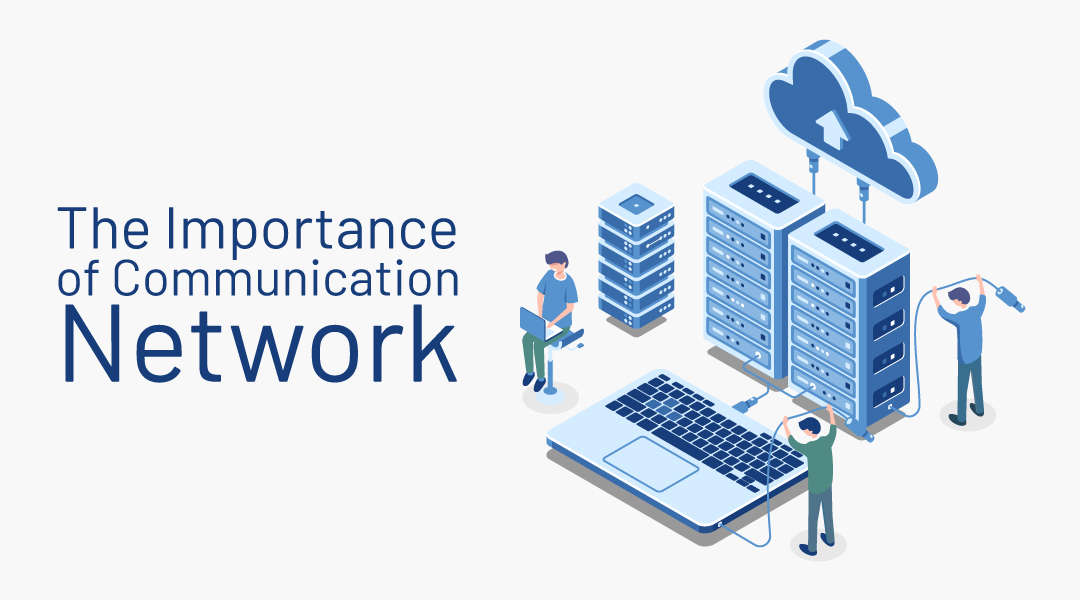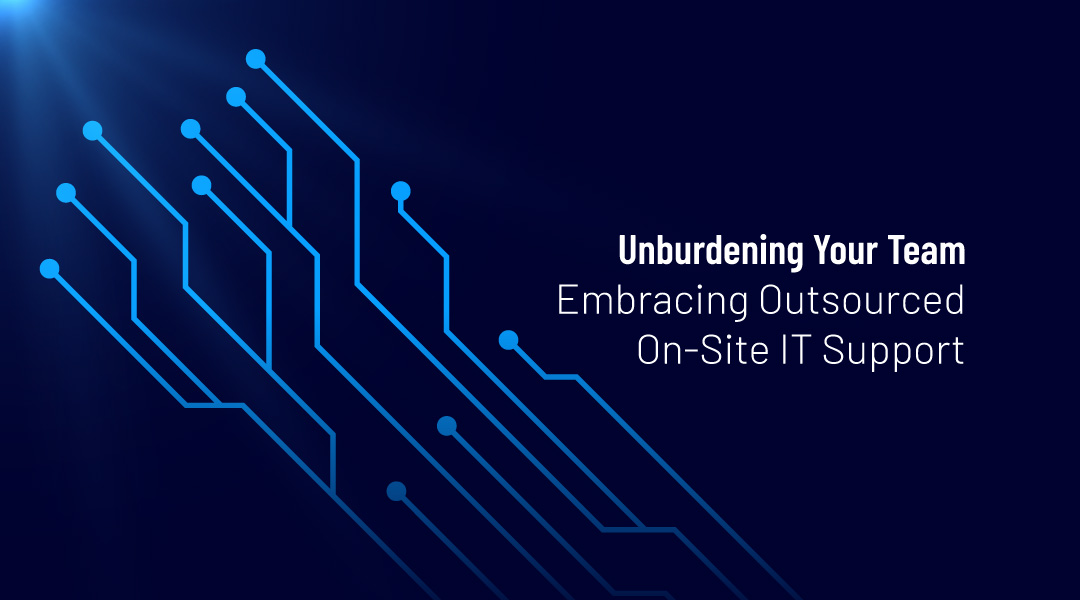The evolution of communication networks has been driven by the rapid advancement of internet and intranet technology, as well as the growing demand for more sophisticated services. These networks play a crucial role in supporting the increasing number of new devices and applications that require high bandwidth. Network service providers, along with their partners, strive to build reliable, flexible, efficient, and fault-tolerant communication networks that can handle increased traffic.
The market is filled with various solutions that cover all phases of network communication, from analyzing the business organization’s needs, to design, implementation, and maintenance. The significance of data communication and networking cannot be overstated, as it has become an essential aspect of modern businesses.
In the following blog, we will dive deeper into the world of communication networks and explore all aspects, including but not limited to, the different types of networks, their components, architecture, and applications.
Structured cabling
Structured cabling is a crucial component of a communication network. It refers to the design and installation of a standardized cabling system that provides a foundation for the transmission of data, voice, and video signals. The structured cabling system includes various components such as cables, patch panels, jacks, and racks, all of which work together to provide a robust and reliable communication infrastructure.
The importance of structured cabling cannot be overstated, as it provides a stable foundation for the active network devices and application solutions. Regardless of the advancements and technological changes in the active network components, the passive network infrastructure remains the backbone of the communication network. This is why it is crucial to install high-quality structured cabling that can support current and future communication needs.
Investing in a well-designed structured cabling system can also save a company time and money in the long run, as it allows for easy expansion and upgrading of the network. The standardized cabling system also helps reduce downtime and improves network performance by minimizing network disruptions, errors, and delays.
LAN / WAN
Local Area Network (LAN) and Wide Area Network (WAN) are two types of computer networks. They are widely used to connect devices and share information and resources. LANs are designed for a small geographical area, such as a single building or campus. WANs connect LANs over larger distances, such as multiple buildings or cities.
One of the key functions of LANs and WANs is to facilitate the switching and routing processes that support network technology. These processes are responsible for directing data packets to their intended destinations. They are ensuring efficient and reliable communication between devices.
Switching in a LAN involves forwarding data packets to their destinations within the network. Routers, on the other hand, are responsible for directing data packets between different networks, including LANs and WANs. The routing process determines the best path for the data packets to reach their destinations and minimizes network congestion.
In addition, LANs and WANs also provide security and quality of service (QoS). They do this by controlling the flow of data and prioritizing certain types of traffic. This helps to ensure that critical applications receive the bandwidth they need to operate efficiently.
Overall, LANs and WANs play a critical role in supporting the communication needs of organizations. They are also facilitating the smooth operation of network technology.
Datacenter networks
Datacenters are the central hub for storing, processing, and managing vast amounts of data. They require high-performance networks that can handle high levels of traffic and provide secure and reliable data transmission. The network infrastructure in a datacenter must be designed to meet the demanding requirements of modern applications and services, such as virtualization, cloud computing, and big data analytics.
High-quality datacenter networks allow businesses to improve their productivity, speed up business processes, and effectively implement change. By providing a fast and secure data transmission infrastructure, datacenter networks enable organizations to make data-driven decisions, support critical business operations, and improve overall efficiency.
Investing in a robust datacenter network infrastructure is essential for businesses looking to stay competitive and meet the evolving demands of their customers and the market. It provides the foundation for businesses to capitalize on the latest technological advancements and drive their digital transformation initiatives forward.
Wireless networks
Wireless networks allow users to access data and resources from anywhere within the network’s coverage area, without the need for physical connections.
In order to provide a seamless and reliable experience, it is crucial to integrate wireless and wired networks into a single entity. This allows the network to support all current standards and provide the necessary upgrade path for the future capabilities and needs of the business organization.
A well-designed wireless network must provide high-speed data transmission, adequate coverage, and robust security features. In addition, it should also be scalable and flexible, allowing it to accommodate future growth and changing demands.
Wireless networks are being deployed in various environments, including homes, offices, schools, hospitals, and public places. They play a vital role in supporting mobile devices, such as smartphones and laptops, and facilitating the use of mobile applications and services.
Video Conferencing
Video conferencing solutions allow businesses to connect with people around the world in real-time, eliminating the need for travel and reducing the cost of in-person meetings. These solutions provide a cost-effective and time-saving alternative to traditional face-to-face meetings, which can be costly and time-consuming.
Video conferencing systems can be integrated with other communication and collaboration tools, such as instant messaging, screen sharing, and file sharing, to provide a comprehensive and seamless solution. In addition, they can be used in a variety of environments, including large conference rooms, small meeting rooms, and personal devices such as laptops and smartphones.
The quality of video conferencing has improved significantly in recent years, with high-definition video and audio capabilities providing a more immersive and interactive experience. This has made video conferencing an increasingly attractive option for businesses looking to improve their communication and collaboration capabilities.
VoIP / IP telephony
Voice over Internet Protocol (VoIP) or IP telephony is a technology that enables voice communication over the internet. By using a single network infrastructure for data and voice traffic, businesses can achieve many benefits over traditional telephony systems, such as reduced telephone costs, elimination of the need to maintain two separate systems, reduced cabling, and improved scalability.
VoIP systems are designed to be flexible, allowing businesses to add new features and functions as their needs change. This makes it an ideal solution for businesses of all sizes, from small businesses to large enterprises. VoIP systems can also be easily integrated with other communication and collaboration tools, such as video conferencing, instant messaging, and screen sharing.
In order to switch to VoIP, businesses need to carefully consider the costs involved, the technical requirements, the impact on their existing infrastructure, and the quality of service offered by the VoIP provider. It is important to understand the differences between traditional telephony and VoIP and to make an informed decision before making the switch.
FoIP
Fax over Internet Protocol (FoIP) is a technology that enables fax transmission over the internet. By using an IP network for fax transmission, businesses can achieve significant productivity gains over traditional fax machines.
FoIP works by converting traditional fax data into digital data and transmitting it over the IP network. This eliminates the need for dedicated fax lines, reduces the cost of fax transmission, and improves the reliability of fax delivery. FoIP also enables businesses to integrate their fax systems with other communication and collaboration tools, such as email and document management systems.
In addition to improved productivity, FoIP also offers businesses many other benefits, such as improved security, reduced paper usage, and increased mobility. FoIP solutions are designed to be easy to use, with intuitive interfaces and user-friendly features that make it simple to send and receive faxes from anywhere, at any time.
Network monitoring
Network monitoring is a critical aspect of communication network management that helps ensure network uptime, reliability, and security. Effective network monitoring starts with a well-designed network infrastructure and continues with the selection and customization of monitoring software tools.
The goal of network monitoring is to proactively identify and resolve issues that may affect network performance and availability. This involves monitoring various network parameters such as traffic levels, response times, device availability, and performance metrics. Network monitoring tools can also provide real-time alerts and notifications when performance thresholds are breached or when potential issues arise.
In today’s fast-paced business environment, having a reliable and secure communication network is more important than ever. Network monitoring helps organizations ensure that their networks are performing optimally and are available to support critical business processes. By monitoring network health and performance, organizations can quickly identify and resolve issues, thereby improving network uptime, reliability, and security.
Network security
Networks have become a strategic place for business development and improvement, leading to the need to protect internal information systems at the network level.
This requires implementing various security measures such as firewalls, encryption, intrusion detection and prevention, access control, and others to prevent unauthorized access, cyberattacks, and data breaches. It is crucial for organizations to regularly assess and update their network security strategy to stay ahead of evolving threats and to maintain the confidentiality, integrity, and availability of their data and systems.
Network access control
is a solution that ensures that each endpoint complies with network security rules before granting access to network IT resources.
It can include authentication, authorization, and accounting mechanisms to manage who has access to the network and what actions they are allowed to perform. This helps organizations to maintain the confidentiality, integrity, and availability of their IT resources and protect against unauthorized access and threats. Network access control can be achieved through various technologies such as firewalls, VPNs, intrusion detection and prevention systems, and others.
Server virtualization and application technology
Following the trends in network technologies, many business organizations nowadays also work with technologies for the virtualization of resources and acceleration of the work of business applications.
Server virtualization is a technology that enables multiple virtual servers to run on a single physical server, which can lead to improved hardware utilization and lower IT costs. It also allows for easier management of IT resources and improved application performance through the isolation of virtualized resources. In addition, virtualized servers can be easily moved between physical hosts without disruption, providing increased flexibility and improved disaster recovery capabilities. The use of application virtualization technologies can further improve the delivery and performance of business applications by allowing them to be deployed and run on any device without the need for local installation. These virtualized applications can also be easily managed and updated centrally, providing improved security and ease of administration.
The importance of communication networks in practice – business organizations do not need all the services defined in the previous paragraphs, and there are more, but each of these solutions requires superior knowledge of the different technologies involved and the ability to integrate different knowledge through the system solution.
How can ITAF help?
Our experienced field engineers, VoIP, and network security experts can help you install and maintain the most effective communication networks that meet the needs of your business organization.
Contact ITAF or book a free call to talk to our communication network experts, and get free quota.













